Date & Time :Saturday.March 6.2021.10:00am-17:00pm
Place :Online Seminar
Details :Joint Workshop organized by the students at Kobe and Iwate Universities
Report :
●Program 1 Agenda
Key word :Great East Japan Earthquake and Tsunami, transferring disaster knowledge, students` role in disaster management and reduction
Summary : The great east Japan earthquake and tsunami with being one of the most devastating hazards of the past decade, is an important bid of the disaster learning chain, for reviewing the experiences, and committed efforts towards the recovery and universal disaster knowledge. In the memory of survivors of the disaster, we have a responsibility to spread the knowledge more widely and move towards building back better.
For this student session, with the help of students from Kobe University, we tried to cover the topics that were important in our learning. Commemorating the disaster and transferring the knowledge and experience is an important act that every each us of can take to be prepared and to transfer to the future generation.
In total, 96 people registered for the event on march 6th, 50 participants attended from the start of the session and 21 participants accompanied until the end of closure session. (Image 1)
Matsushita san, Master’s degree candidate from Kobe Uni. reviewed the long-term recovery of selected areas in Kobe city after 1995-Earthquake.
Nakamura san, the 2nd year undergraduate student in the field of sustainable development introduced their volunteer student club in the Tohoku disaster affected communities and review some of their activities.
Mr. sato from Kesennuma, made us familiar with the memorial of Koyo high school in kesennuma city. Also, the high school students` volunteer group gave a speech about their activities and events and gives the chance of visiting the memorial virtually during a global pandemic.
In the afternoon, Professor Flavia Fulco from the IRDS, Tohoku Uni. Made a lecture about the Kataribe, or the art of disaster storytelling in Japan and conducted a Kataribe workshop by interaction among participants and sharing disaster experiences.
Miss Bulbulnaz jalaladin, a PhD candidate from Kobe Uni. presented about her research on international residents in japan during and after disasters, and her invited gust, Ms. Marife from Rikuzentakata shared her experiences and thoughts on the great east japan earthquake and tsunami 2011.
Mr Matsushita showed some DIY survival skills for the emergency time. And participants actively shared their experiences with the beneficial use of those items.
In the closure discussion, professor Buan Anshari from Mataram Uni. Indonesia briefly reviewed the events and shared the initial disaster act in Indonesia.
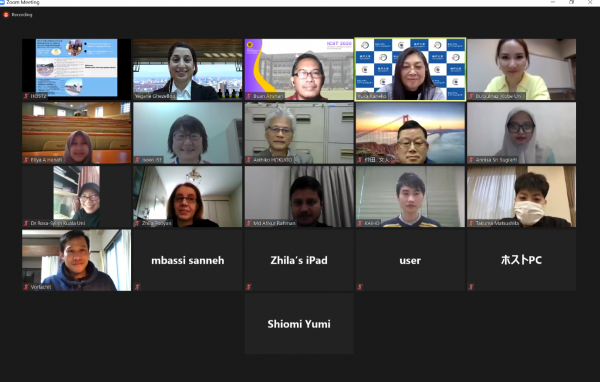
●Program 2 Virtual tour of disaster affected area by Hanshin Awaji Earthquake based on Shin Nagata Area at Hyogo Prefecture
Key word :Post recovery, Urban planning
Summary : 26 years has been past from the Hanshin Awaji Earthquake which was occurred in 1995/1/17. Through this disaster, mainly in Shin Nagata Area was totally affected by the earthquake and many of the industries and lives were collapsed. Long term of post recovery session has been finished in recent years which was indicated by the VR tour. But the post recovery of the residents were not ended which need to concluded by communication with the municipalities and also the central government.
●Program 3 The Project of Tohoku Volunteer Bus Project
Key word :Touhoku East Japan Earthquake, Volunteer, Message card
Summary :Their event had conducted by zoom meeting to let us share the activities of volunteer project in Tohouku area. Since the East Japan Earthquake has occurred, many people all over the world has gathered to the Tohouku area to support recovering mental health of victims. For instance, holding some tea event, making some message card, making some original project (origami) to encouraged the victims. However, corona virus has widespread, their project has been postponed. They use their knowledge to create some encouraging activity by using an internets service.
●Program 4 Introducing about Ruins of the Great East Japan Earthquake Kesennuma City Memorial Museum
Key word :Post recovery, Kataribe, Memorial activity
Summary :Ten years had passed form 3.11, many of the residents in Japan has been forgotten about the Great East Japan Earthquake. According to this situation, the museum above including Sato-san and high school students are trying to widespread the memories of 3.11 utilizing their facilities. The opportunity is to memorize the 3.11 disaster and remind to all of the citizens in the world, not to forget about the crucial events. 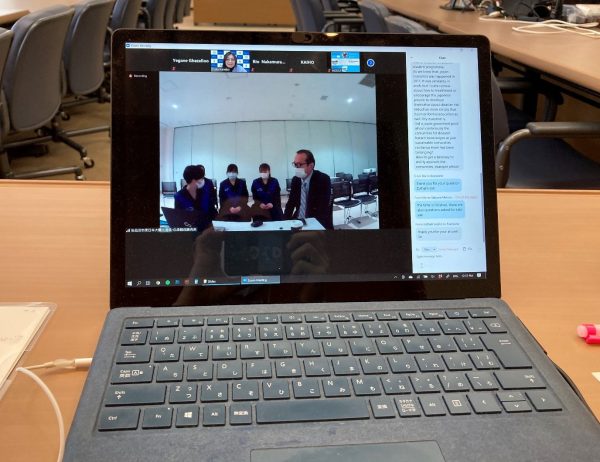
●Program 5 Meeting with Filipino Community in Tohoku, Interview and Survey Result
Key word :Psychosocial recovery, Great East Japan Earthquake, Filipino community
Summary :PAGASA Filipino Community leader, Ms. Sugawara was invited as a guest speaker. She talked about her disaster experience, how the Filipino residents formed PAGASA community and their community activities since the disaster.
In 2020 March, questionnaire survey was conducted among PAGASA community members, in the purpose of assessing mental health recovery, perceived social support and satisfaction with governmental support. After the first wave assessment, in depth interviews were conducted with participants. Filipino residents had some difficulties due to language barrier and lack of experience. Their main concerns are job and income recovery. During the short and long term recovery, Ofunato Catholic Church became their gathering place, they received support from community, religious organizations and other aid agencies. High level of perceived social support, active participation in the community and strong ethnic tie between Filipino residents played positive role in participants psychosocial recovery.
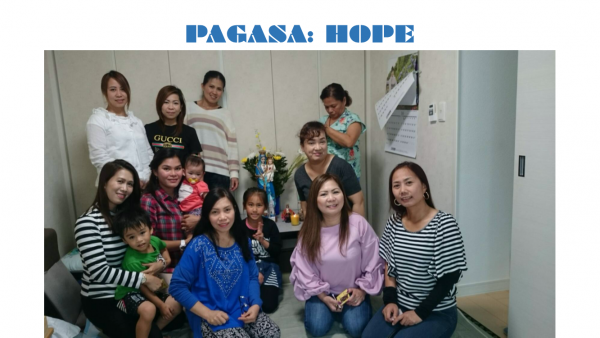
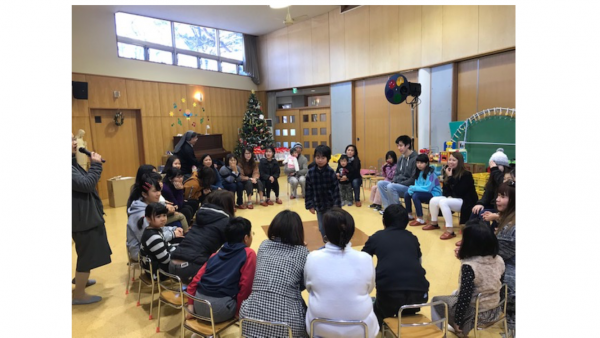
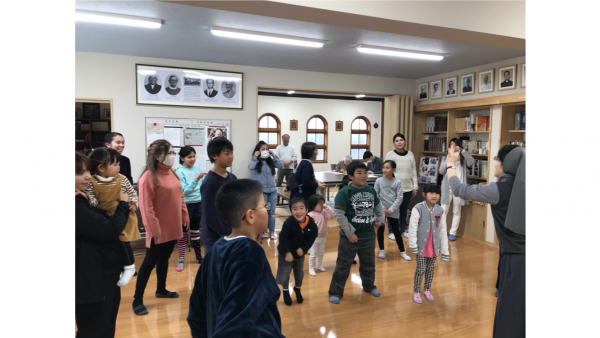
●Program 6 Kataribe Workshop Let’s learn and try Japan ’s disaster story telling together, 90 minutes
Key word :Kararibe, Disaster storytelling, International disaster experience
Summary :Post-disaster storytelling is diffused along the affected areas in the coastal region of Northeast Japan. It is itinerant sessions, often organized in tours by local associations to explain about local history and tradition and to transmit the experience of the disaster. Kataribe, introducing visitors to the history of places that in most cases no longer exist, has emerged as a cultural practice that contributes to support local recovery and to keeping shared stories alive.
Historical background of kataribe: It comes from the verb 語る /kataru, which means ‘to tell’, and, in the past it was used to indicate those people who has the role of narrating the stories, legends, and folk tales of a given region. In this newly acquired nuance, the term has started to be used after Hiroshima bombing to indicate the storytelling of the hibakusha, the survivors of the atomic bombing.
Kataribe in Tohoku: There are different types of Kataribe depending on the location, but until now the most diffused ones are itinerant ones, which includes several locations. as an example, the town of Minamisanriku in Miyagi.
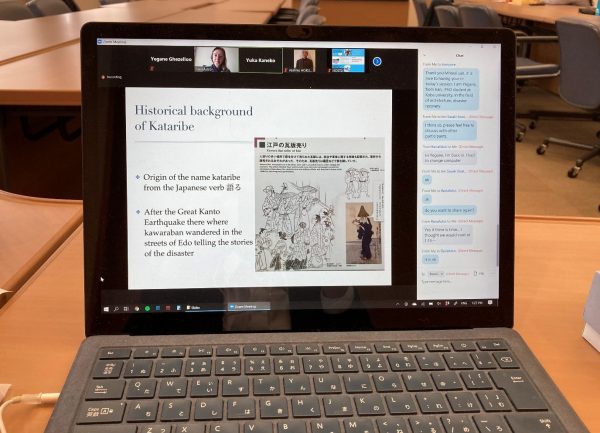
Teaching of Kataribe: History is a process made of personal stories sewing themselves together and it requires a while to reveal itself. While history completes its endless work, stories are the hints we possess. They are the remnants of the past while at the same time, the starting point of what will be the future for post-disaster communities.
Challenges for the future of kataribe: Katatibe is a Japanese word and the way this practice has been developing in Japan, as we saw, has many implications with Japanese culture, however the practice of post-disaster storytelling is diffused in other countries. Disasters have different origins, and while it is not as common as in Japan to talk about past disasters it is possible to find example of practices similar to kataribe in area affected by terroristic attacks such as New York.
at the end of the session, participants were guided to different meeting rooms and facilitated by translators for ENG/JP and retold a small example of kataribe and shared their experiences of disaster. Later, the participants were back in the main room and one volunteer of each group shared the interaction and communication with all of the participants.
Image 3
●Program7 DIY Wrokshop for
Key word :Do it yourself, Disaster prevention, Daily Supplies
Summary :According to this activity, Takuma Matsushita has introduced some daily products to save each live from the disaster. Since, the prediction of Great west Earthquake and Central Tokyo inner Earthquake has finalized to be occurred in several years, many of the residents in Japan have to prepare for the emergency situation. In the disaster situation, many of the people are going to be panicked, which point out the importance of prompt response. In addition, many of you have to save their lives by themselves which needs to prepare by the daily products(paper, gas, glue, garbage bag etc…)
●Program8 Session closure
Key word :importance of DRR and DRM, DRR and DRM in Indonoseia
Summary :Professory Anshari from Mataram University Indonesia, as the closure discussant, reviewed the vents and emphasized the importance of transferring the knowledge and experiences of disaster to other generations and communities. He mentioned that disaster learning could be impacted better will similar events that share a global goal.
he also shared the initial acts of disaster risk reduction DRR and DRM in Indonesia and pointed out the globally aligned attempts for the safety and sustainability in Indonesia, as one of the disaster-prone countries.
